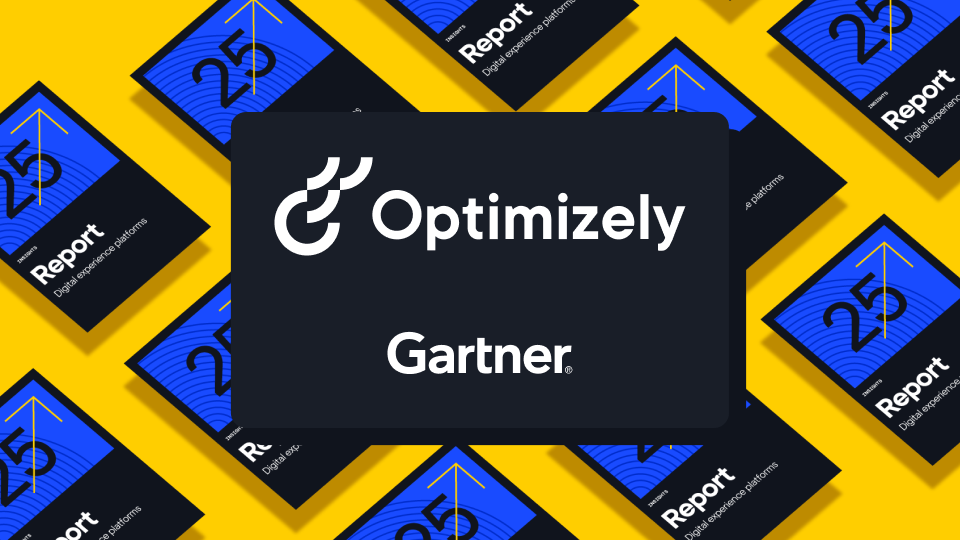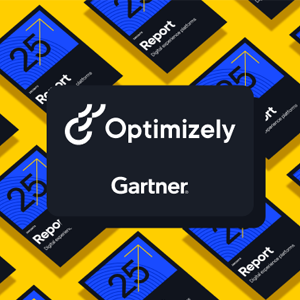The 5 main reasons why software consolidation is top of mind for CIOs (and how to approach it yourself)
Economic uncertainty and game-changing technologies like Generative AI (Gen AI) appear to have propelled IT and technology consolidation towards the top of business to-do lists worldwide. Yet in truth, organizations—read Chief Information Officers—are constantly seeking ways to streamline operations and improve efficiency.
Best of breed v Consolidation first
That said, when it comes to the technology stack the pendulum swings between ‘best of breed’ and ‘consolidation first’. In previous years, business leaders and CIOs have seen a significant growth in the adoption of specialized ‘best in breed’ software to manage different aspects of a business. Single point solutions flourished in a marketplace that accepted a single capability justifying a purchase of a software platform.
But now the pendulum is heading the other way, with economic uncertainty and technological innovation adding to the momentum. CIOs are increasingly consolidating their software providers to a few key players not just to save costs, but also to remain competitive by keeping up with transformative innovations like Gen AI. And those key players must enable businesses to quickly innovate and show proof-of-value as soon as possible.
Explore the latest trend in digital transformation
In this article, we will explore five main reasons why a CIO would want to consolidate software providers, then go through the decision-making involved in evaluating those providers. Bottom line? Consolidation is nothing to fear, offering new opportunities to create efficiencies and fast-track innovation.
Reason to consolidate #1: Cost savings
They say: “a penny saved is a penny earned”. And by cutting down on vendors, an organization can often negotiate better prices and volume discounts with those that remain. This offers the potential to generate significant savings on costs such as software fees, maintenance costs, and support services.
Beyond general cost increases from multi-vendor engagement, the less obvious rationale is that by reducing the number of software providers, an organization also reduces the complexity – and therefore the costs - of managing them.
Reason to consolidate #2: Streamlined support and vendor management
That leads us to the fact that managing multiple software providers can be a logistical nightmare for CIOs, IT teams, and business system owners. Each vendor tends to follow its own support processes, SLAs, and escalation procedures, making it difficult to manage issues and resolve problems efficiently.
Consolidating software providers streamlines the number of touchpoints and simplifies communications. With fewer vendors to manage, organizations can build stronger relationships with their key providers, leading to more responsive support and faster resolutions. This not only improves the overall user experience, but also helps minimize downtime and maintain business continuity.
Reason to consolidate #3: Improved integration and interoperability
The greater the number of software solutions, the more complex and time-consuming it can become to seamlessly integrate systems. By consolidating software providers, CIOs can simplify the integration process and improve interoperability between systems. Key providers are more likely to offer purpose-built APIs and pre-built integrations that allow their software to communicate with other systems. This reduces the time and effort required to integrate systems, while also helping to make sure that data flows smoothly to improve organizational efficiency.
Reason to consolidate #4: Gain more control over security and compliance
Multi-integration points can exacerbate concerns around security and compliance—a daunting task for any organization. Different software providers follow their own security protocols and compliance requirements, making it difficult for CIOs to ensure their data and systems remain fully secure and comply with industry regulations.
Consolidation helps CIOs to win back control. Smaller numbers are easier to manage. And key providers are more likely to offer both robust security measures and familiarity with the relevant industry compliance requirements. This makes it easier to implement consistent security policies and procedures, while ensuring the organization remains compliant.
Reason to consolidate #5: Greater focus on innovation and strategic initiatives
Finally, with fewer vendors to manage, CIOs free up valuable time and resources that can be redirected towards long-term strategic projects, new technologies, and new opportunities for innovation. Selecting vendors that deliver future-forward capabilities like Gen AI will only serve to bolster your own innovation objectives, scale, and growth, helping organizations to stay ahead of the competition and drive long-term success.
So that’s the why. Here’s the how…
It is crucial to evaluate platforms against specific criteria to ensure your journey to IT consolidation aligns with organizational goals and requirements while enabling quick execution. The following five benchmarks will offer a starting point when it comes to deciding which software platforms to select—and which to move away from.
Consolidation criterium #1: TCO and ROI
ROI and TCO are probably the two most common acronyms in the business world right now. With cost always a significant factor in technology consolidation decision making, total cost of ownership and return on investment are indisputably part of the equation.
- Usage/Consumption/Licensing fees: Compare the pricing models of platforms to ensure they are fully transparent and fit the budget.
- Implementation costs: Assess the costs associated with implementation, including data migration, customization, and training.
- Ongoing costs: Evaluate the ongoing costs of using the platforms, such as maintenance, support, updates – not to mention the resources required (internal, external or direct-from-vendor).
- ROI: Estimate the potential ROI by considering factors such as improved efficiency, reduced overheads, and increased productivity.
Consolidation criterium #2: Functionality and capabilities
Beyond cost factors, it is also essential to ensure that functionality, features, and capabilities will effectively support an organization’s processes and workflows both now and into the future.
- Core features: Can the software perform the ‘day job’? Identify the non-negotiable features you require, but also consider capabilities in other areas that could do the job of existing stand-alone platforms.
- Game-changing capabilities: Review any new capabilities that could change the way you work. Remember, talking about Gen AI (or any other transformative innovation) is completely different to demonstrating a practical, truly beneficial application.
- Scalability: Software needs to be scalable to continue meeting the organization's needs as it grows and evolves. Scalability isn’t simply a matter of pure infrastructure, but also includes other criteria such as increased accessibility, responsiveness, and data handling.
- Customization: The organizations will ideally be able to tailor the software to its specific requirements.
- Deployment: All the functionality and capabilities in the world are meaningless if you cannot get the consolidated systems up and running quickly. Plus, employees and customers then need to embrace the technology and quickly see the results. It could be well worth researching the track record of software providers in standing up their platforms, not to mention the speed of value realizations.
- Roadmap and timelines: Does the roadmap spark the flame of innovation? The immediate needs of the organization need to be balanced with those of the next 12-24 months.
Consolidation criterium #3: Vendor support and reliability
Functional and capabilities need to be backed up by reliable vendor support that is there when you need it to make sure your software stays online and doing the job 24/7/365.
- Support channels: Research the availability and responsiveness of a provider’s support channels, such as email, phone, and live chat.
- SLAs: Review the provider’s service level agreements (SLAs) to ensure they meet expectations for issue resolution and response times.
- Vendor reputation: Look up the provider’s reputation in the industry, including customer reviews and testimonials, to gauge their reliability and commitment to customer success.
Consolidation criterium #4: Integration and interoperability
The ease of integration and interoperability between the chosen software platforms and the organization's existing systems also needs to be considered. Seamless integration is vital for ensuring smooth data flow, improving user-experience, and reducing the time and effort required to manage multiple systems.
- Pre-built integrations: Check if the platform offers pre-built integrations with existing systems or commonly used applications.
- APIs: Assess the availability and robustness of APIs to facilitate custom integrations if required.
- Data migration and availability: How easily will data migrate from current systems to the chosen platforms?
Consolidation criterium #5: Security and compliance
As we have already touched upon above, security and compliance play a crucial part in determining IT consolidation. The chosen solutions must adhere to the organization's security policies and meet industry-specific compliance requirements.
- Security features: Assess a platform’s built-in security features, such as encryption, access controls, and data protection measures.
- Compliance certification: Don’t simply check for relevant compliance certifications, such as GDPR, ISO or SOC 2, but also for the provider’s statement of applicability and how long those certifications have been held.
- Vendor security practices: Evaluate the provider's security practices, including incident response plans and security audits. How many incidents have they had? What were the causes and how significant were the issues?
In summary
Consolidating software providers offers numerous benefits for CIOs and their organizations. From cost savings and improved integration to enhanced security and streamlined support, reducing the number of software vendors can help organizations simplify their operations and focus on what truly matters – driving innovation and growth.
IT consolidation also offers a valuable opportunity to evaluate your vendors: what they offer, what you have already purchased, and what might be on the way to help you drive innovation. By carefully assessing the software landscape and identifying key providers, CIOs can take a significant step towards a more efficient, secure, and agile organization.
This is the kind of approach we live by at Optimizely when it comes to choosing software for the benefit of our employees and partners. And by fulfilling these criteria, we also believe Optimizely represents a smart choice for any business and organization starting out on the road to technology consolidation.
- Last modified: 4/28/2025 2:50:19 PM



